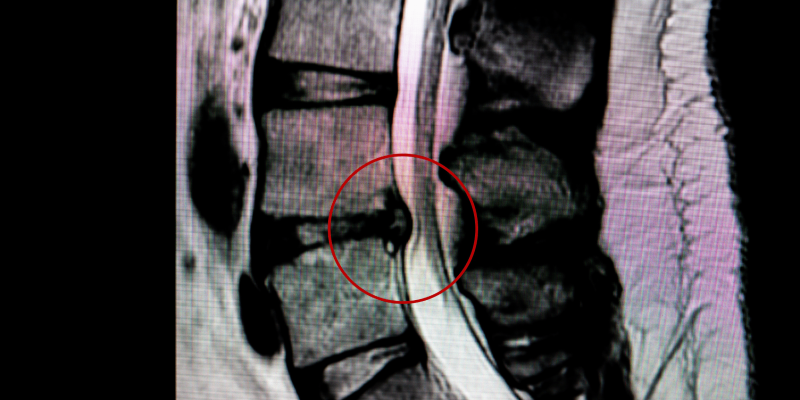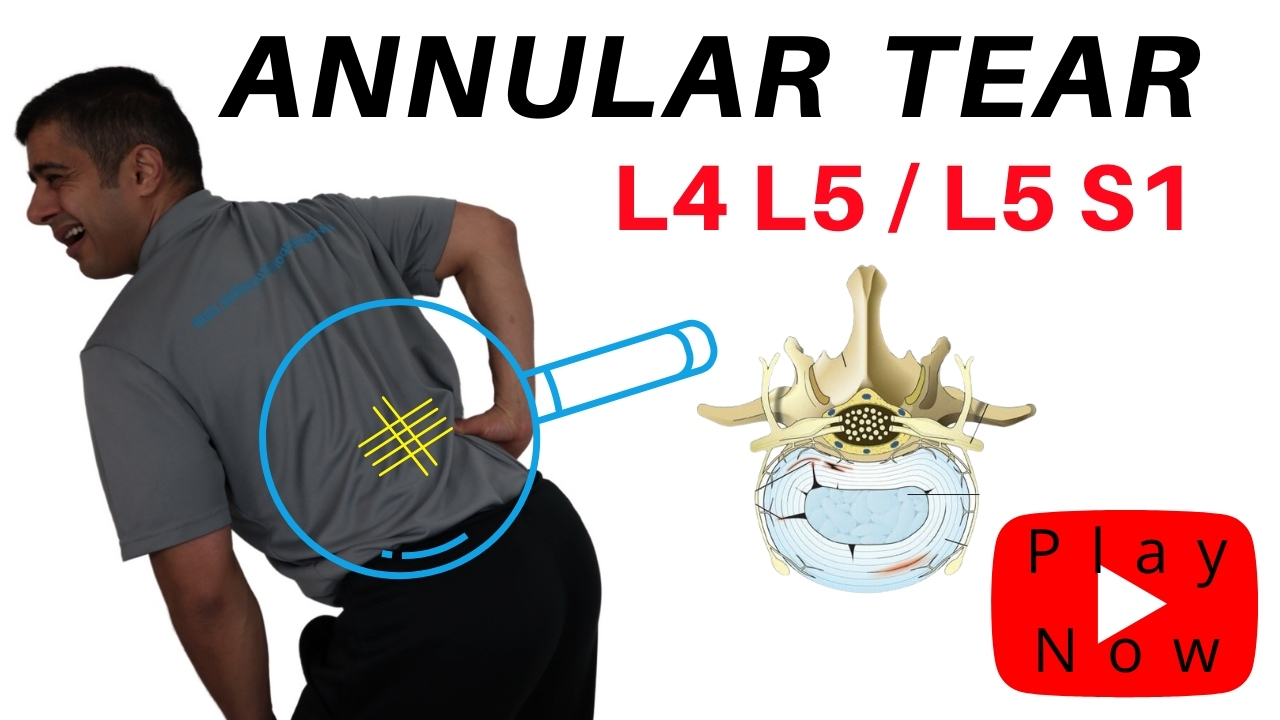Your Spinal column has 33 vertebrae and the top three-quarters of which are separated by discs. These discs, 23 in all, serve to cushion and protect the vertebrae; they absorb shock and help to keep weight in the back evenly distributed.
The inside of the disc, the nucleus, is made of a soft, gelatinous fluid, and the outer half is made of tough connective fibers called the annulus fibrosus.
An annular fissure or tear is a deficiency of one or more layers of the annulus fibrosus. Most annular fissures are asymptomatic, but some may be painful. Typically, simple symptomatic annular fissures without disc herniation are treated with non-steroidal anti-inflammatory medications and low-impact physical therapy. An annular fissure or tear is a deficiency of one or more layers of the annulus fibrosus.
The anatomy and cause of Annular tear:
The annulus fibrosus is the type I collagen surrounding the nucleus pulposus in approximately 15-20 layers. Together, the annulus fibrosis and nucleus pulposus form the intervertebral disc between adjacent vertebrae. The annulus fibrosus runs obliquely between edges of adjacent vertebrae, connecting the inferior endplate of the superior vertebra with the superior endplate of the inferior vertebra. The directions of the layers of the annulus fibrosus alternate which adds to the strength of the annulus fibrosus. Near the central region, the annulus fibrosus blends with the nucleus pulposus.
The posterolateral aspect of the annulus fibrosus has a greater content of vertically oriented fibers leading to relative focal weakness at the posterolateral aspect. This anatomy of the annulus fibrosus explains why most annular fissures are at the posterior or posterolateral aspect of the annulus fibrosus.
On the other word, as we get older, the vertebral discs can start to exhibit wear & tear (normal ageing process) . One of the common changes in the discs could be a tear in the annulus fibrosus. The annular fibers commonly referred to as an annular tear or fissure.
How Common is An Annular Tear ?
It is commonly identified in asymptomatic individuals during imaging for other reasons. Estimates for annular tears in adults range from a few percents to upward of 50% depending on the criteria and imaging used to identify an annular tear / fissure. That mean out of 2 people 1 would highly have a chance to have an annular tear without any symptoms.
Treatment and management of annular Tear
What are the difference between a symptomatic or asymptomatic. Symptomatic annular fissures can occur with or without intravertebral disc protrusion or herniation.
Asymptomatic Annular Tear
If the annular tear or fissure is identified incidentally, most commonly on MRI imaging, then no treatment is warranted. Such annular fissures may resolve spontaneously over time and are frequently due to the stresses applied to the spine.
Asymptomatic Annular Tear managemnet
It is posited that some asymptomatic annular tears may become symptomatic with time, but there is currently no definitive evidence that the treatment of asymptomatic annular tears provides any benefit or prevents any future issues.
Symptomatic Annular Tear without Disc Protrusion or Herniation
An annular fissure or tear can be symptomatic without disc protrusion or herniation. It is suspected that local inflammatory reactions from the annulus fibrosus tear or fissure lead to irritation of adjacent nerve fibers or traversing nerve roots.
Treatment Options / Non invasive
The treatment for such situations is – non-steroidal anti-inflammatory (NSAIDs). & low-impact physical therapy.
Symptomatic Annular Tear with Disc Protrusion or Herniation
If there is disc protrusion or herniation, it is usually the protruding or herniated disc material itself which causes the clinical symptoms. In such cases, the patient is treated for the disc protrusion or herniation and not the annular fissure or tear.
Diagnostic test for High Intensity Zone
For diagnosis, your doctor may try a CT discogram. In this procedure, a liquid dye is injected into the disc and observed on a CT scan. The dye will contrast with the disc, and any tears, however small, can be spotted.
However, study have concluded, injection during discography, the same percentage of asymptomatic and symptomatic discs with a high-intensity zone were shown to be painful.”
Treatment Options / Non invasive
Treatment options for disc protrusion or herniation including conservative measures of (NSAIDs), physical therapy. You can contact us for more information.
Treatment Options for Annular Tear / Annular Tear Surgury
Recent studies suggest the act of discography on a normal disk in the control group will cause that disk to degenerate at a faster rate.
In this video I shared with you what is Annular Tear is and what is the sign and symptoms and what are the options for management of Annular Tear or annular fissure. I share what you a series of exercises that can help you with pain and mobility.
Our Approach
Dublin Sports Injury Clinic is a Physical Therapy Clinic based in Pearse Street, Dublin 2. We have a high volume of patients who are treated with low back pain. Initially, our treatment will be focusing on helping our patients to get pain free as quickly as possible. We educate our patients to understand the cause of their back pain and how they can stay pain-free. Our treatment and rehabilitation exercises will be customized for every patient and we show them the correct techniques and progression.
Next step
Want to get in touch with our team of a therapist or you are looking for some advice? Simply fill in your details below & we get in touch with you shortly.
FOLLOW US ON YOUTUBE AND GET ACCESS TO OUR WEEKLY FREE REHABILITATION EXERCISES.
Disclaimer: This article is for information only and should not be used for the diagnosis or treatment of medical conditions. You can contact us if you would like to book an appointment or get some advice from our therapist.


